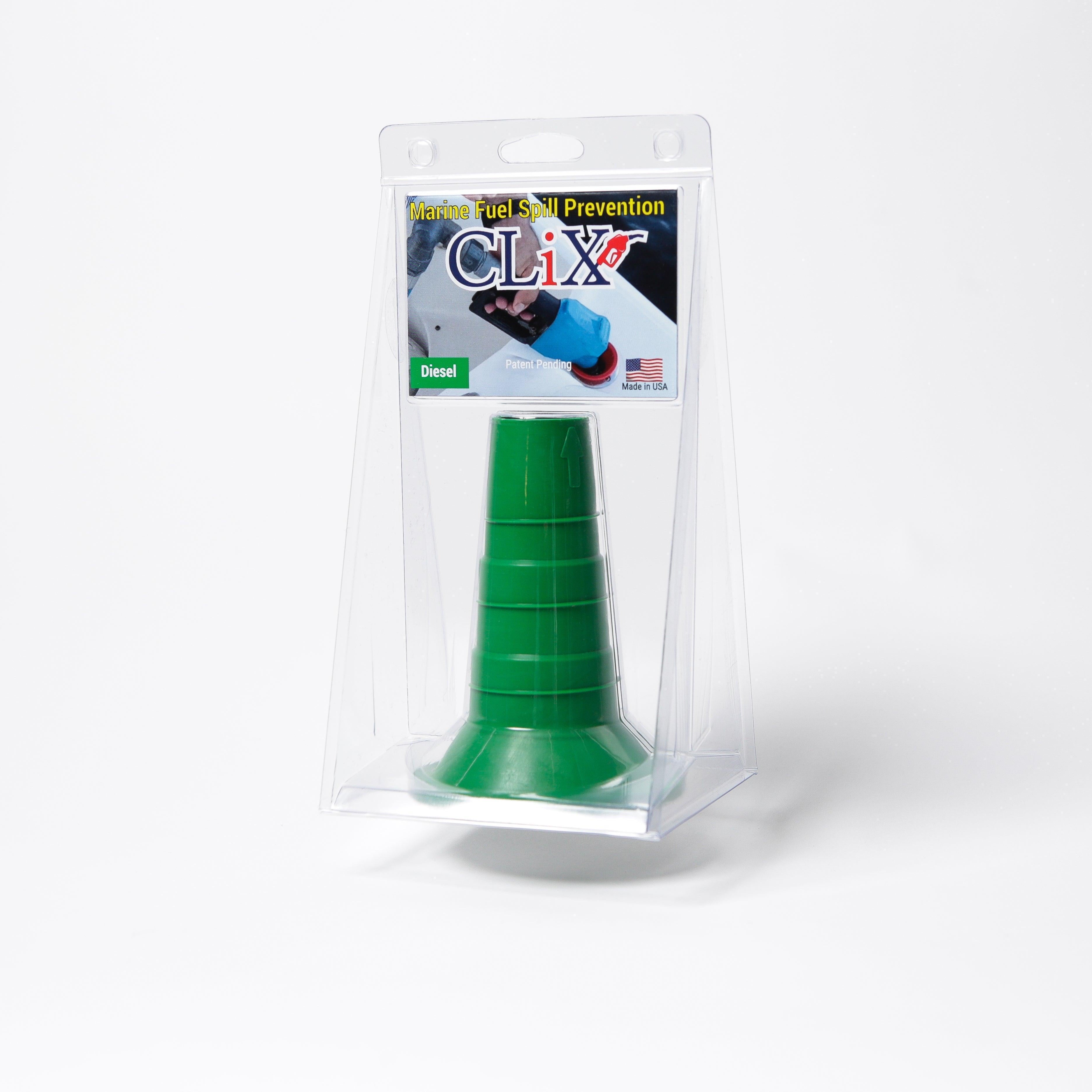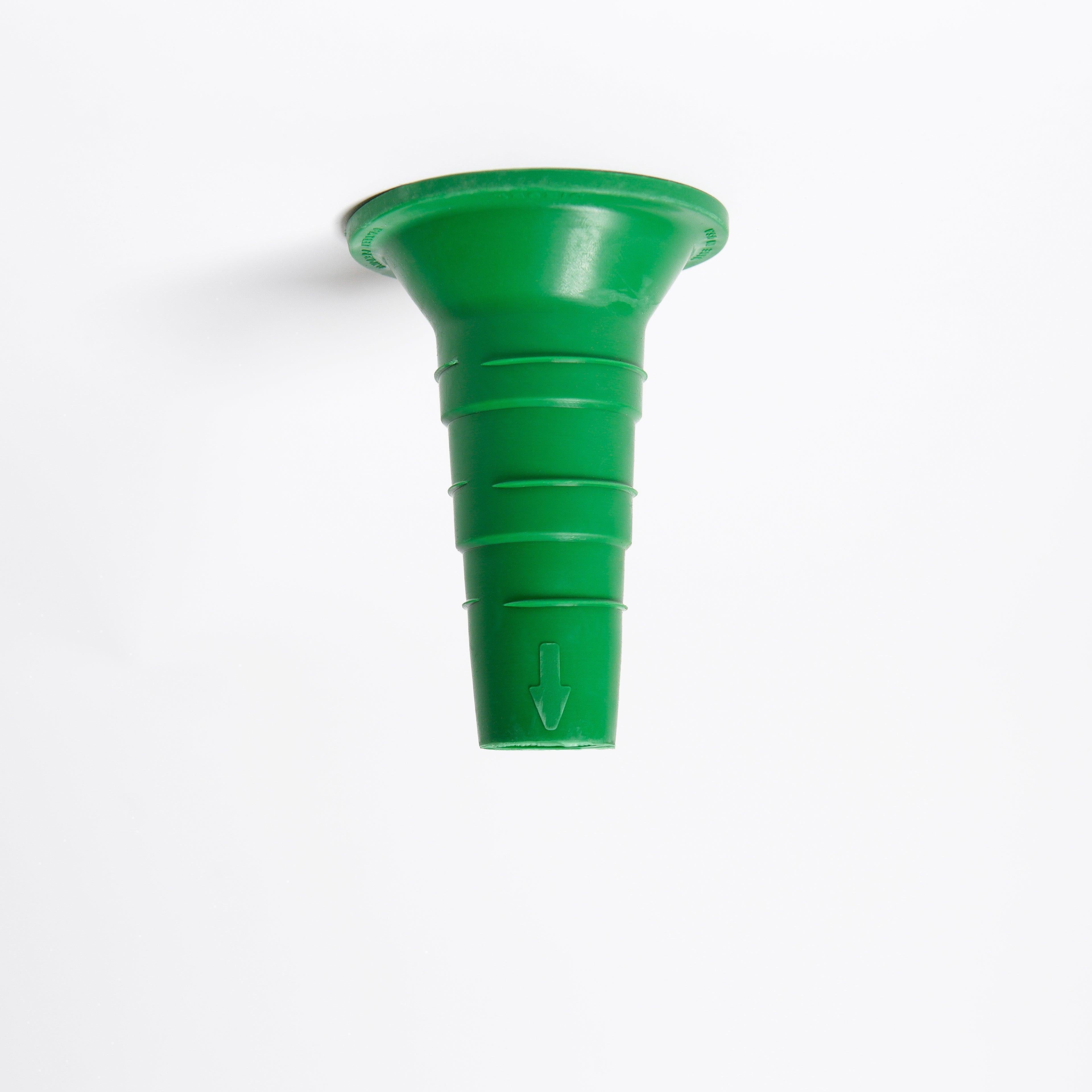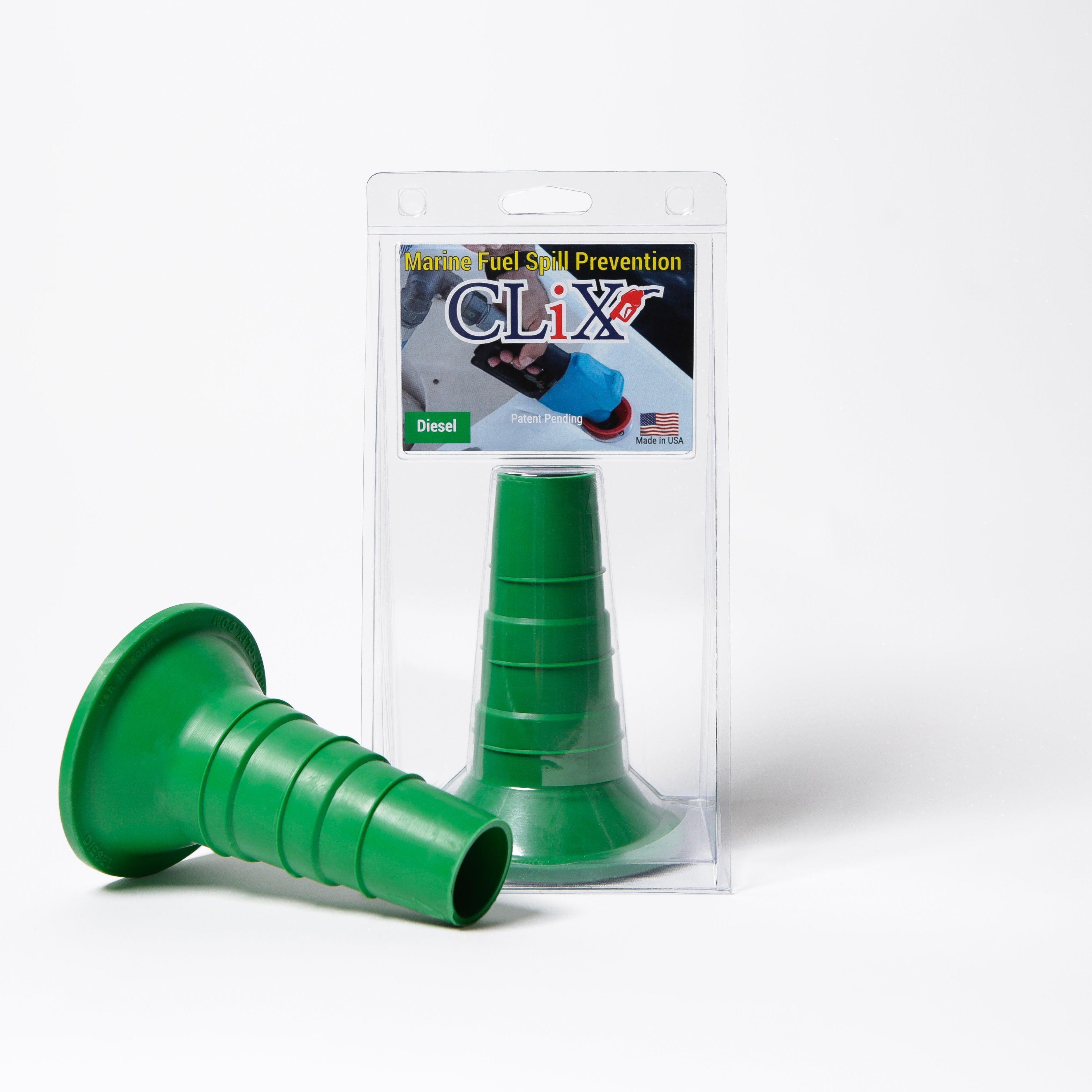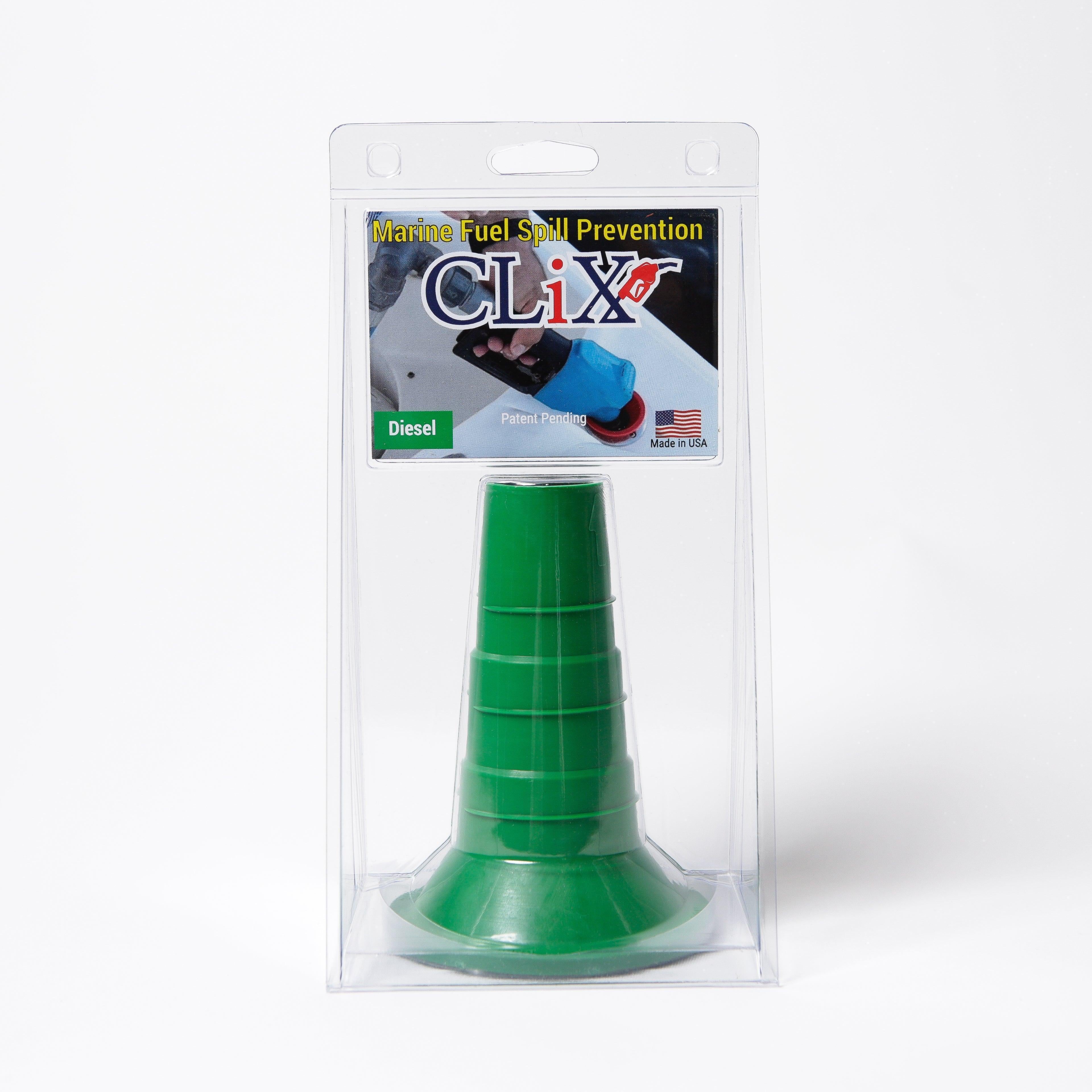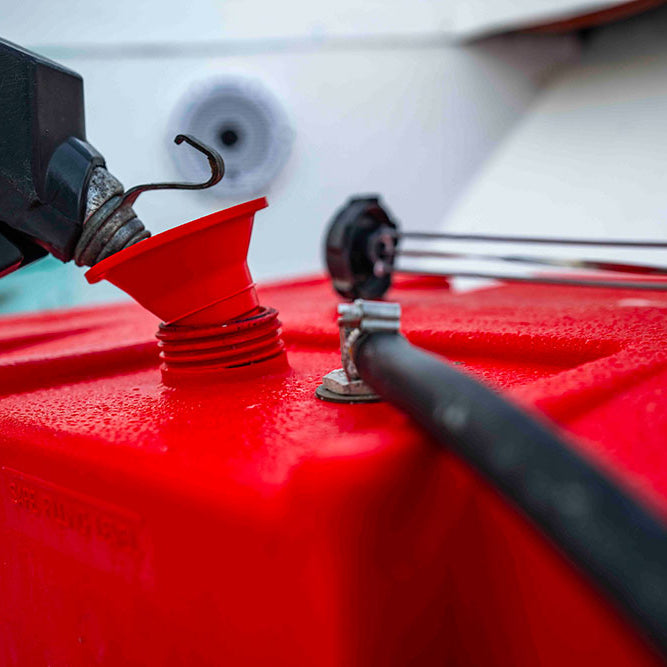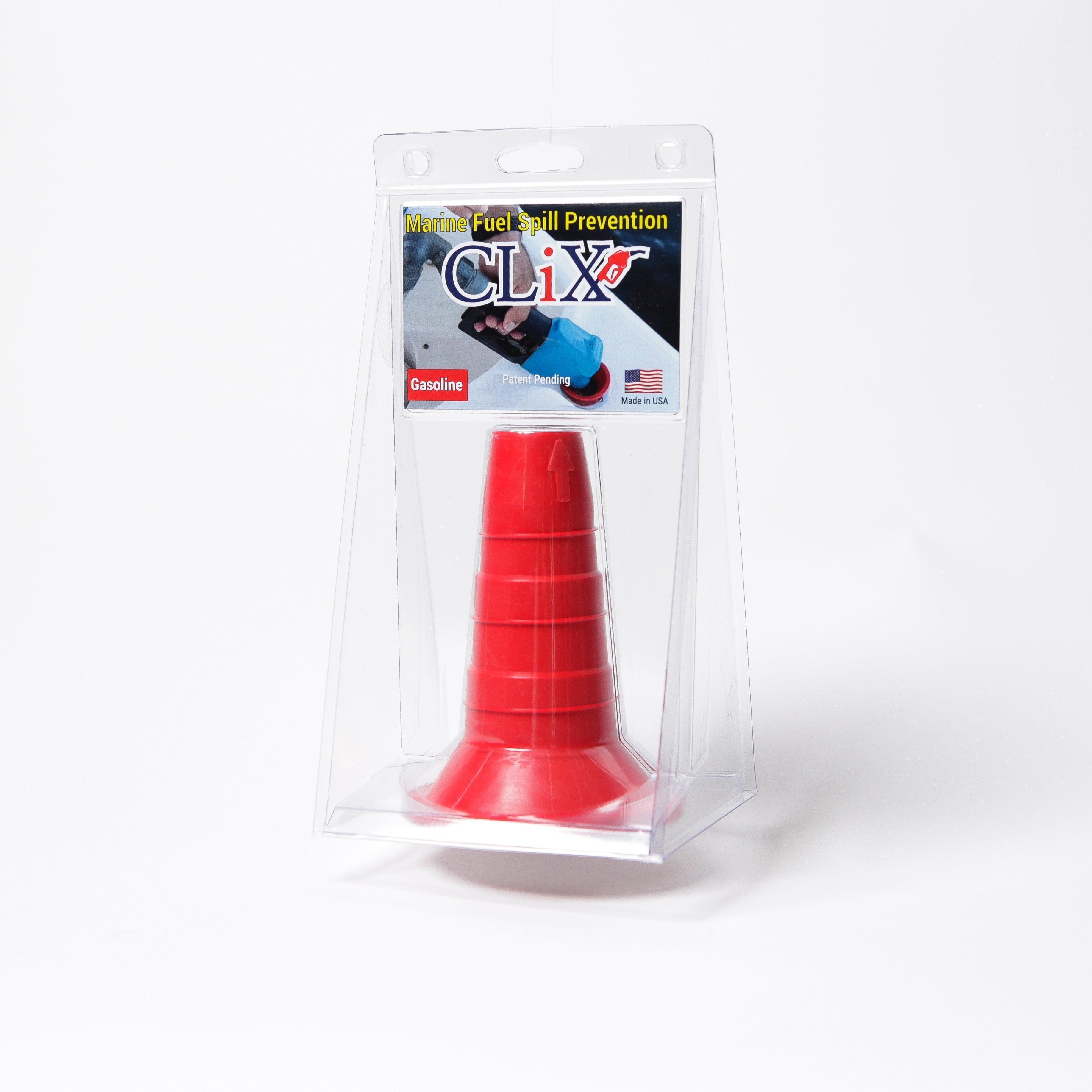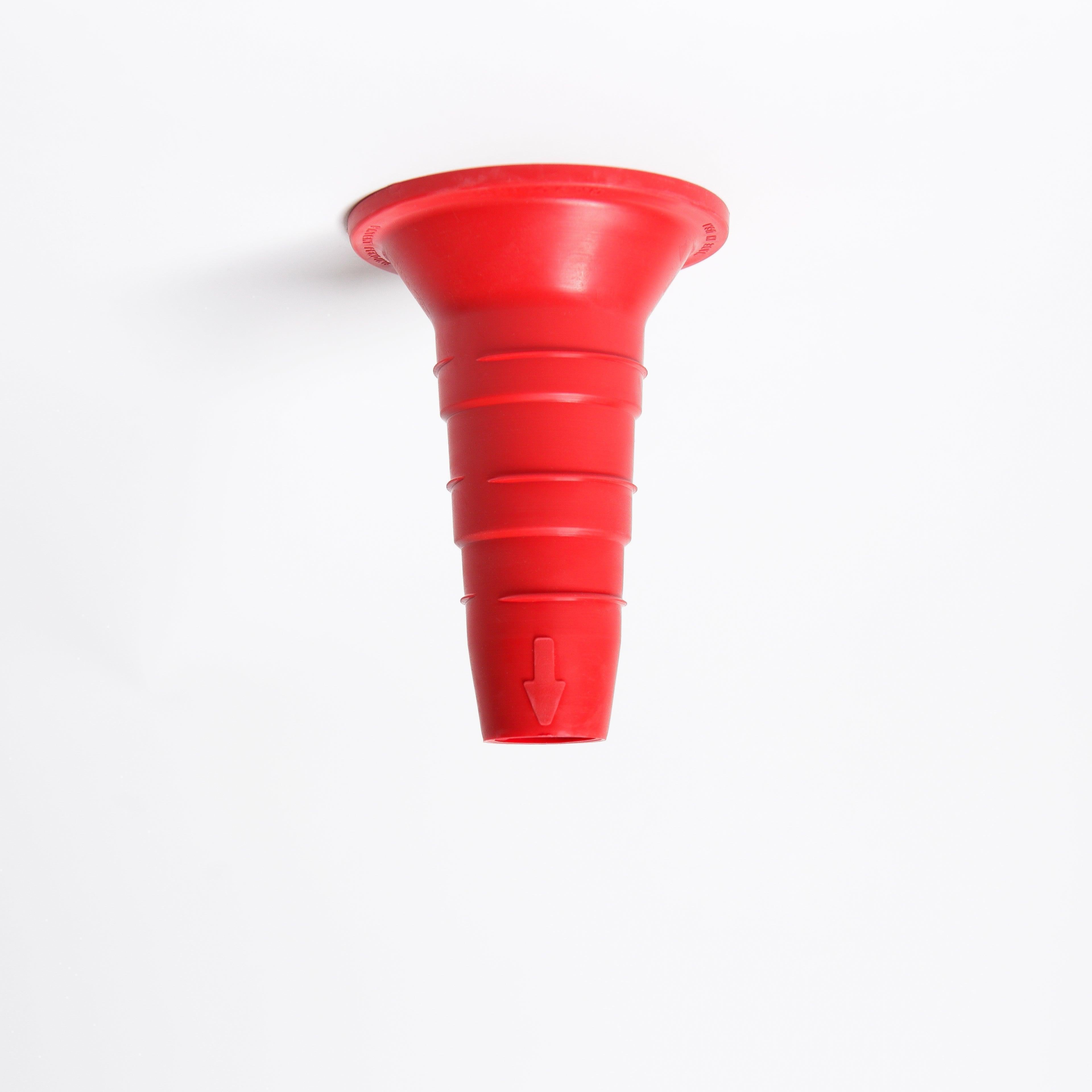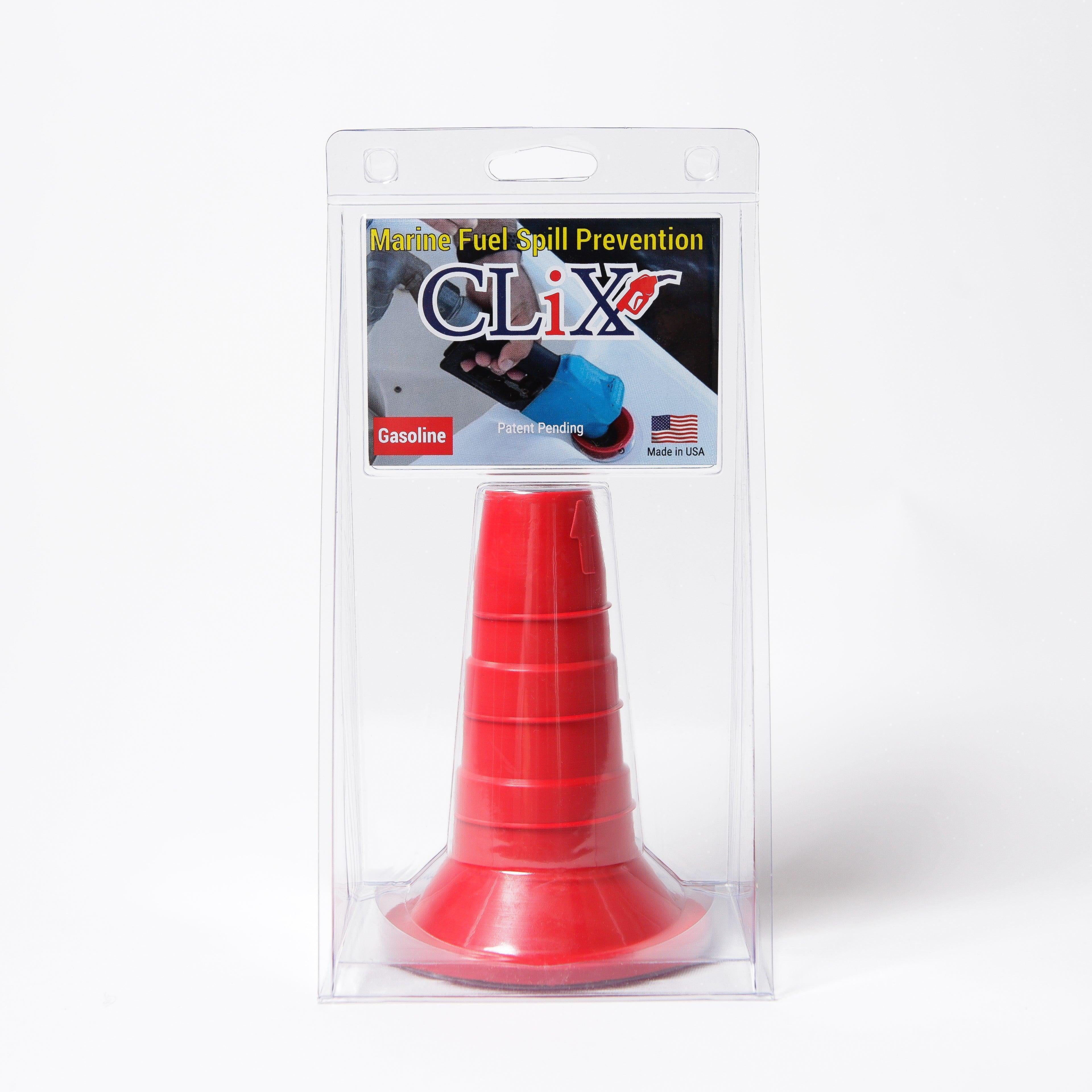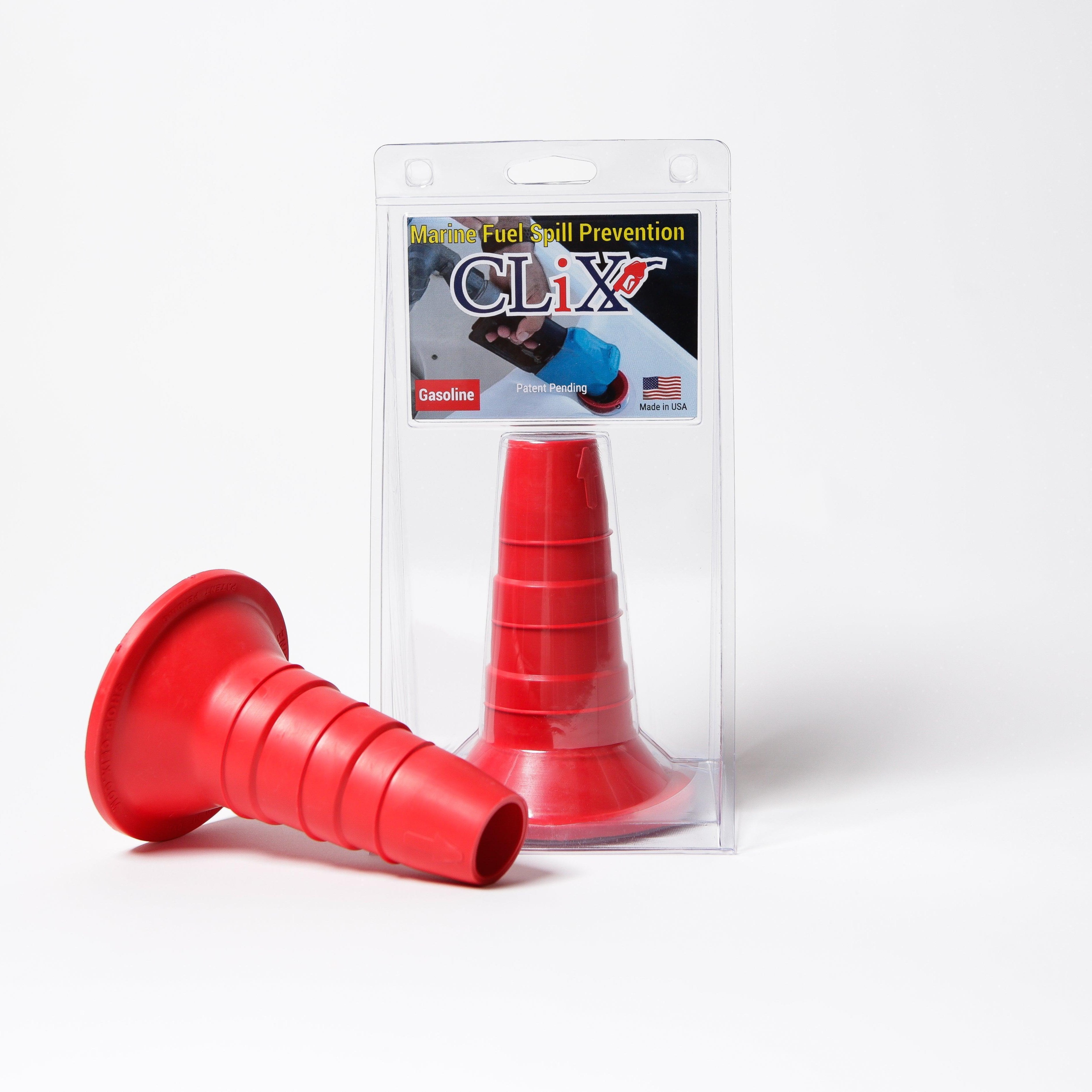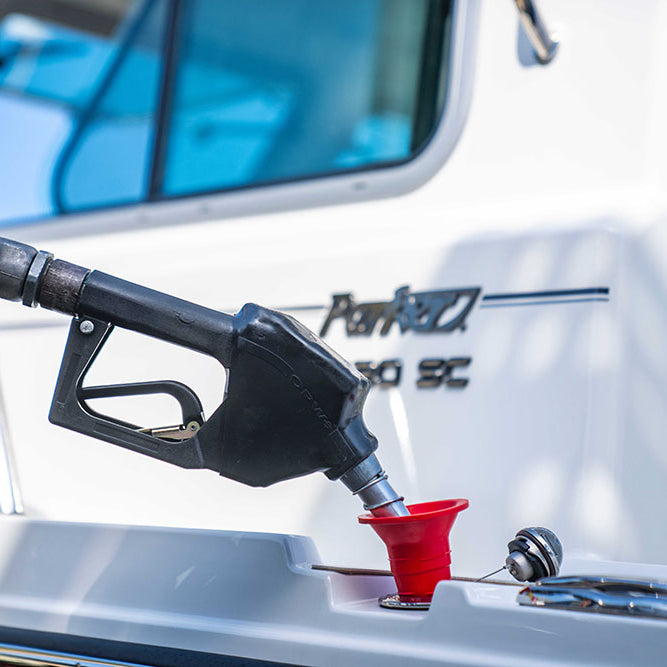Pulling up to a fuel dock can feel a little intense, especially on a busy day. But with a few simple checks before you even cast off, you can turn a potentially stressful task into a smooth, routine part of your day on the water.
Think of it as a pre-flight check for your boat. Taking a moment to prepare ensures everything goes off without a hitch, keeping you, your passengers, and the environment safe.
Your Pre-Fueling Safety Checklist

This isn't about complicated, time-consuming steps. It’s all about building smart, simple habits that prevent common mistakes at the pump. Getting organized before you leave your slip removes the guesswork and lets you focus completely on the task at hand once you're at the dock.
Know Your Boat Inside and Out
First things first: know exactly what kind of fuel your boat takes. Is it gasoline or diesel? Putting the wrong fuel in your tank is a surefire way to cause catastrophic, expensive engine damage. It’s an easy mistake to avoid.
You should also know your tank's total capacity and have a solid idea of how many gallons you’ll need. This simple bit of knowledge is your best defense against a messy, dangerous, and environmentally harmful overfill.
Prepare for Your Arrival
As you motor toward the fuel dock, get ready for a clean tie-up. Have your dock lines and fenders ready to go before you arrive. This little bit of prep work means you can secure your boat quickly and efficiently, preventing any awkward drifting or bumping while you're trying to manage the fuel hose.
A prepared boater is a safe boater. Having your lines, fenders, and payment method ready before you reach the dock reduces stress and minimizes time spent in a potentially congested area.
Brief Your Crew
Finally, have a quick chat with your passengers. Make sure everyone knows the ground rules long before you get to the dock: absolutely no smoking, no open flames, and they need to stay clear of the fueling area. A simple safety briefing turns your passengers from bystanders into a part of your safety team.
Here's a quick reference table to help you remember these essential steps every time you head to the fuel dock.
Essential Fuel Dock Safety Checklist
This checklist breaks down the key actions you should take before, during, and after fueling to ensure a safe experience for everyone.
| Phase | Action Item | Why It Matters |
|---|---|---|
| Before Fueling | Get passengers ashore if possible. | Minimizes ignition sources and keeps people safe from fumes. |
| Before Fueling | Close all windows, ports, and hatches. | Prevents explosive gasoline fumes from entering the cabin. |
| Before Fueling | Turn off all engines and electronics. | Eliminates potential sparks that could ignite fuel vapors. |
| During Fueling | Keep the nozzle in contact with the fill pipe. | Grounds the nozzle to prevent static sparks. |
| During Fueling | Don't use the hands-free clip; fill slowly. | Prevents overfills and spills from a nozzle popping out. |
| After Fueling | Wipe up any spills immediately. | Removes flammable liquid from boat surfaces. |
| After Fueling | Run the blower for at least 4 minutes. | Vents any accumulated fumes from the bilge before starting the engine. |
| After Fueling | Perform a "sniff test" for fumes. | The final check to ensure it's safe to start the engine. |
Following this simple routine takes just a few extra minutes but makes a world of difference in keeping your fueling stops safe and uneventful.
The Role of the Modern Fuel Dock
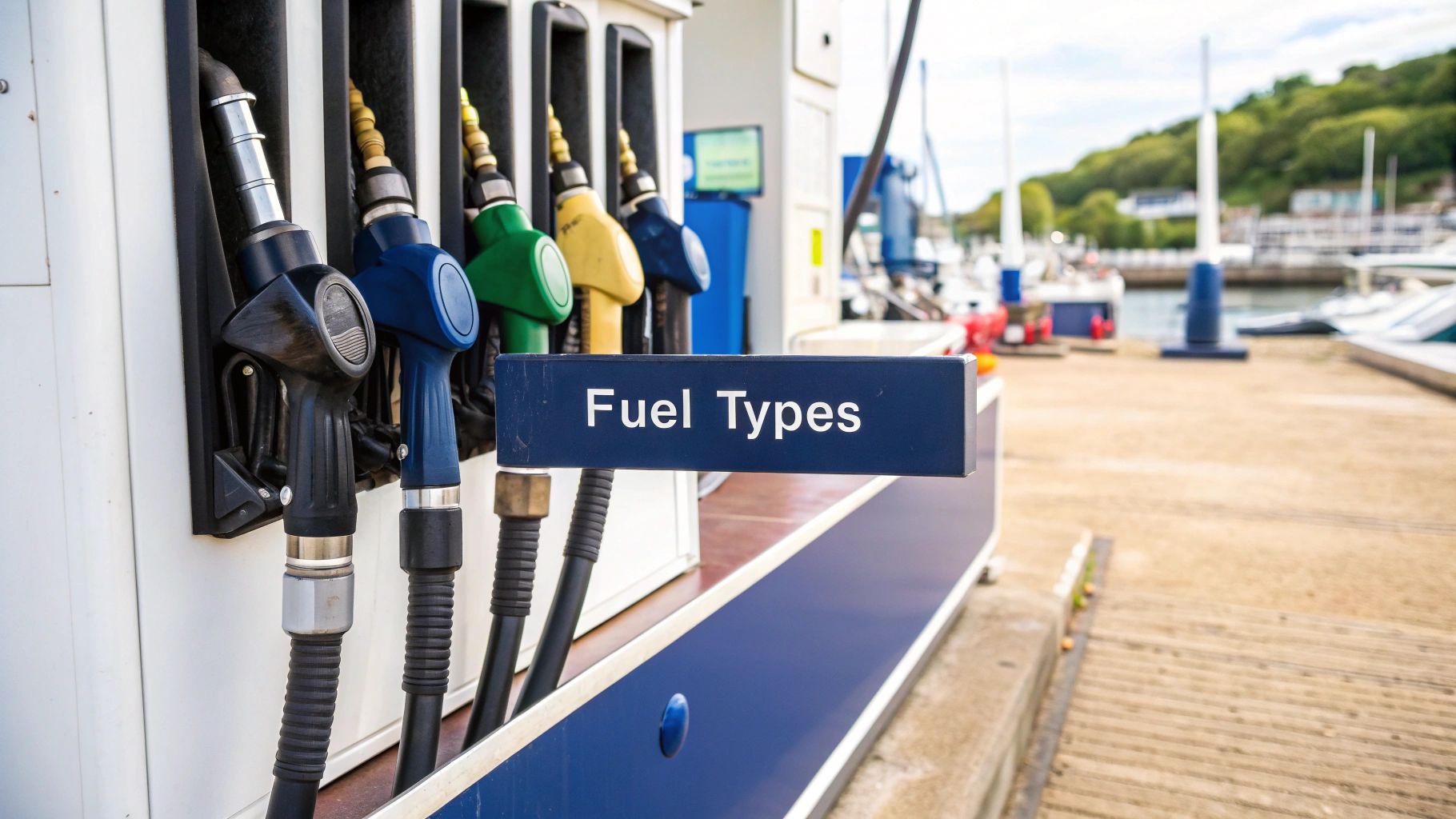
It’s easy to think of a boat fuel dock as just a floating gas station. A quick pit stop before you head out for a day of fun on the water. But if you look a little closer, you'll see they are so much more than that. These docks are the beating heart of the entire marine community, bustling hubs that keep both recreational and commercial boaters moving.
Think of it this way: the fuel dock is the central hub of any marina. It’s where boaters cross paths, swap stories, and get the fuel and services they need to make their adventures happen. It's the one place nearly every boater has to visit.
With the boom we've seen in recreational boating lately, that role has become more critical than ever.
More Than Just a Pump
Today’s fuel docks are no longer isolated pumps on the water. They're often part of a much larger network, tightly integrated with other services that boaters rely on.
- Maintenance and Repairs: You’ll often find fuel docks right next to boat lifts and service yards, making it easy to schedule essential maintenance.
- Convenience Services: It's standard to find pump-out stations, fresh water hookups, and even small ship stores selling ice, snacks, and basic supplies.
- Hospitality and Tourism: These docks are gateways to waterfront restaurants, resorts, and local shops, playing a huge part in the economy of coastal and lakeside towns.
This all-in-one approach turns a simple refueling stop into a full-service experience. Boaters today expect things to be efficient and convenient, and modern marinas have stepped up to meet that demand.
The modern fuel dock is a cornerstone of the marine economy. Its smooth operation enables everything from a family’s weekend outing to the daily activities of commercial fishing vessels, highlighting its central role in the maritime world.
A Growing and Interconnected Industry
The health of your local boat fuel dock is a small reflection of a much bigger picture. The entire marine infrastructure market is growing to keep up with more and more people getting out on the water.
In fact, the boat docks and lifts market—which goes hand-in-hand with fuel dock infrastructure—is expected to grow by USD 287.3 million between 2025 and 2029. This boom is a direct result of the global rise in recreational boating and all the commercial activity that springs up around it. You can read more about the trends in the marine infrastructure market to see just how much is changing.
So, the next time you pull up to a boat fuel dock, remember that you're part of a dynamic, growing industry. It’s a great reminder of why following safety and environmental rules is so important. When you fuel up responsibly, you’re not just protecting yourself and your boat—you're helping sustain the whole marine community that makes these incredible experiences possible.
A Step-by-Step Guide to Fueling Your Boat
Pulling up to a fuel dock for the first time can feel a little intimidating. Even for seasoned boaters, it’s a task that demands your full attention. The key is to have a solid, repeatable routine. Once you have a flow, it becomes a simple, confident part of any day on the water.
Think of it as a pre-flight checklist for your boat. Every step has a purpose, all designed to keep you, your boat, and the environment safe. Breaking it down removes the guesswork and gives you a clear mental map to follow every single time.
Approaching and Securing Your Boat
The process really starts before you even think about grabbing the fuel nozzle. As you approach the fuel dock, take it slow. Always be mindful of the wind and current, as they can push you around more than you’d expect. A gentle, controlled arrival is what you’re aiming for.
Once you’re alongside the dock, get those lines and fenders in place. A properly secured boat isn’t going to drift away or get banged up, which gives you a stable, safe platform to work from. This isn’t just for looks—it prevents the heavy fuel hose from getting stretched or the nozzle from popping out of the fill pipe mid-fuel.
This quick visual guide lays out the essential safety flow for every fill-up, from inspection to being prepared for the unexpected.
It’s all about having a proactive mindset. Checking your gear and having a shutdown plan ready is just as crucial as the act of pumping the fuel itself.
The Fueling Process From Start to Finish
Okay, you’re tied up securely, and you’ve shut down all engines and electronics. Now you're ready to fuel up. Follow these critical steps and you'll be in great shape:
- Confirm the Fuel Type: This is the big one. Double-check that you’re grabbing the right pump—gasoline or diesel. It’s the single most important thing you can do to avoid a catastrophic, and expensive, mistake.
- Ground the Nozzle: Before a drop of fuel goes in, touch the metal nozzle directly to the metal rim of your boat’s fuel fill. Hold it there for a few seconds. This simple action discharges any static electricity, which is a serious fire hazard.
- Use Absorbent Pads: Place an absorbent pad around the fuel fill opening. It’s a cheap, easy way to catch any drips or small burps of fuel, keeping them off your deck and out of the water.
- Pump Slowly and Listen: Never, ever use the hands-free clip on a fuel dock pump. Fill your tank at a steady, manageable pace. You'll start to hear a gurgling sound as the tank nears full—that’s your cue to slow down even more.
- Don't Top Off: A boat isn't a car. Its fuel tank is much more likely to "burp back," spitting fuel out of the fill pipe. Always aim to fill your tank to about 90% capacity. This leaves room for the fuel to expand as it warms up in the sun.
Heads up: You can't trust the pump's automatic shut-off feature. The way marine fuel systems are designed means those auto-shutoffs are notoriously unreliable. They're a common cause of spills, so always maintain manual control.
Post-Fueling Checks and Departure
The pump has clicked off, but you're not done just yet. Carefully remove the nozzle, keeping it angled up so that last little bit doesn't drip out. Screw the fuel cap back on tightly.
Now, wipe up any small spills and get rid of the used absorbent pad in a proper receptacle. Here’s the most important safety step: run your bilge blower for at least four minutes to vent any fumes that may have collected. Finally, do a quick "sniff test" around the engine compartment and bilge. If you don't smell gas, you’re safe to start up. Knowing the basics of how your boat fuel system works can really help you appreciate why these safety steps are so important.
Critical Safety Rules You Cannot Ignore
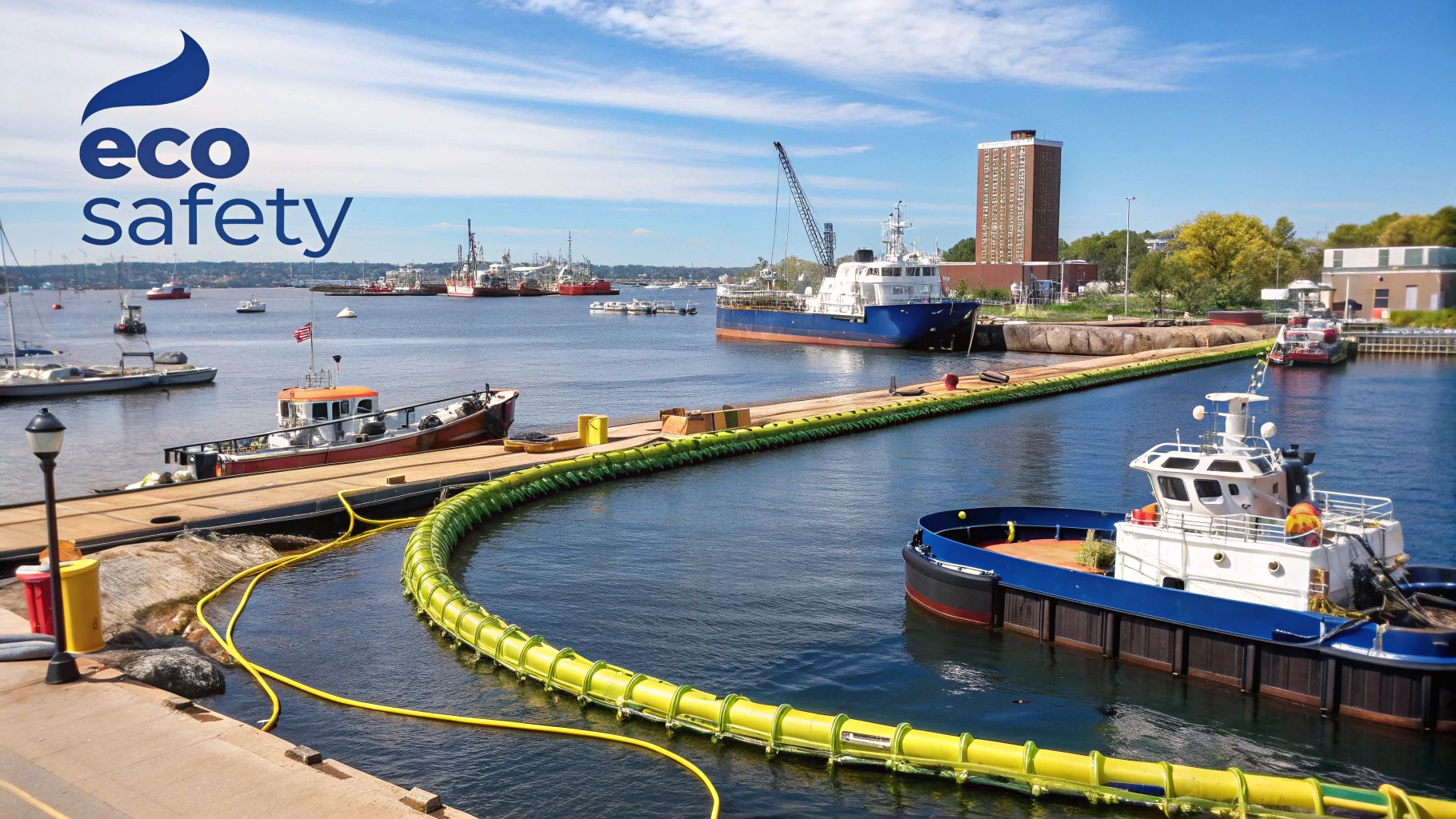
When you're pumping dozens, or even hundreds, of gallons of highly flammable liquid, there’s zero room for error. The rules at a boat fuel dock aren't just polite suggestions; they are ironclad procedures designed to prevent a truly catastrophic accident. Understanding the why behind each rule helps turn a simple checklist into a powerful safety mindset.
Skipping even one tiny step can have devastating consequences. Let’s say a boater forgets to shut off their boat's main battery switch. A small, unnoticed electrical short could easily create a spark at the exact moment gasoline fumes are at their most concentrated. That single oversight is all it takes to turn a peaceful day on the water into a disaster.
The Science of Fumes and Sparks
Gasoline fumes are heavier than air. This is a crucial fact. They don’t just float away and disappear; they sink and collect in the lowest parts of your boat, like the bilge and engine compartment. These trapped fumes create a highly explosive environment, just waiting for an ignition source.
This is precisely why the most important rules are all about eliminating any and every potential spark:
- Turn Off Everything: Shut down all engines, electronics, generators, and even the main battery switches. Anything that runs on electricity is a potential source of a spark.
- No Smoking or Open Flames: This seems like the most obvious rule, but it’s also the most critical. A lit cigarette or a portable grill is a direct invitation for an explosion.
- Secure All Hatches and Ports: By closing all openings, you prevent those heavy fumes from creeping inside your boat's cabin, galley, and other enclosed spaces where they can get trapped.
Vigilance is your single most important tool at the fuel dock. The combination of volatile fumes and potential ignition sources creates a hazard that demands your complete and undivided attention.
Why Ventilation Is Non-Negotiable
After the nozzle clicks off and you've hung it up, those invisible fumes are still a major threat. That's why running your bilge blower for a minimum of four full minutes is a non-negotiable step for any gasoline-powered boat. This isn't just about clearing out a bad smell; it's about actively forcing explosive vapors out of your vessel before you do anything else.
Before you even think about turning the key, do a final "sniff test" near the bilge and engine areas. Your nose is a surprisingly effective safety device here. If you smell even a faint hint of gasoline, do not start the engine. Continue to ventilate until the smell is completely gone.
Spills can happen to even the most careful boater. Knowing how to respond is crucial, and our detailed guide on fuel spill cleanup procedures can help you prepare for the unexpected. Following these rules is your best defense against the invisible dangers at the boat fuel dock.
Fueling with Environmental Responsibility
Let's be honest, protecting our waterways starts right at the boat fuel dock. It’s something every boater needs to take seriously, because even a few seemingly harmless drops of fuel can cause real damage. That rainbow sheen you see on the water? It spreads fast and is toxic to the marine life we all enjoy.
It's mind-boggling, but a single drop of oil can contaminate up to 25 liters of water. When you multiply that by the thousands of boats fueling up every day, you start to see how tiny, individual spills add up to a massive problem for the ecosystems we love to explore. Preventing those little spills is one of the most powerful things you can do as a boater.
Mastering Spill Prevention Techniques
The old saying holds true: an ounce of prevention is worth a pound of cure. When it comes to fuel, the best way to clean up a spill is to make sure it never happens in the first place. This just takes a few simple habits.
- Use an Absorbent Pad: Before the nozzle even gets near your boat, place a fuel-absorbent pad or a "fuel bib" around the deck fill. Think of it as cheap insurance—it's your first line of defense against drips and burps from the tank.
- Slow Down: Fueling isn't a race. Take your time, especially as you get close to a full tank. An old pro's trick is to listen to the sound of the fuel going in; you'll hear the gurgle change as it fills up, giving you a heads-up to stop.
- Avoid the "Top-Off" Temptation: We've all been tempted to squeeze in that last little bit, but don't do it. A good rule of thumb is to fill the tank to about 90% full. This leaves room for the fuel to expand on a hot day, preventing an overflow out of the vent.
Making these small adjustments to your routine is a huge part of being a responsible boater. For a deeper dive into this, check out our guide on how to stop water pollution.
What to Do If a Spill Occurs
Even the most careful boater can have an accident. If a spill happens, acting quickly and correctly makes all the difference.
First thing's first: stop the fuel flow immediately. Then, grab the absorbent pads from your spill kit and get to work soaking up what’s on your deck or in the water. Whatever you do, do not use soap or dish detergent. It seems like a good idea, but it just breaks the fuel into smaller droplets that sink and poison everything below the surface. Always notify the dock master right away—they have the training and equipment to manage the situation properly.
It's important to know that under federal law, any spill that creates a visible sheen on the water must be reported to the National Response Center. The dock master can help, but ultimately, it's the boater's responsibility.
This push for greener practices is shaping the entire marine industry. For example, the market for floating dry docks is expected to hit USD 10.41 billion by 2034, partly because of stricter environmental rules. These regulations are changing how every boat fuel dock is built and run. You can read more about the growth in eco-friendly dock infrastructure to see where the industry is headed.
Of course. Here is the rewritten section with a more natural, human-written tone.
Common Questions About Using a Boat Fuel Dock
Even seasoned boaters can have questions at the boat fuel dock. Things happen, and it pays to be prepared. Let’s tackle some of the most common uncertainties you might face, so you can fuel up with confidence every time.
What Happens If I Use the Wrong Fuel?
Putting the wrong fuel in your boat is a costly, engine-killing mistake. If you put gasoline in a diesel engine, you’re stripping away its lubrication, which can cause catastrophic damage in minutes. Put diesel in a gas engine? It’ll sputter, smoke like a chimney, and eventually just quit on you.
Always, always double-check the pump and your boat's fuel cap before you squeeze the trigger. Most docks try to help you out with color-coded nozzles—red is usually for gasoline, while yellow or green is for diesel—but it’s on you to be sure.
How Can I Avoid Overfilling My Tank?
Overfilling is a mess. It wastes money, harms the environment, and is a real pain to clean up. The best way to prevent it is to know your tank's capacity and pay close attention. As the tank fills, the sound changes—that’s your signal to slow down and get ready to stop.
A word of caution: don't trust the pump's automatic shut-off. Marine fuel fills are installed at all sorts of odd angles, making those auto-shut-offs notoriously unreliable. They’re a primary cause of spills. The only surefire way to avoid a mess is to control the nozzle yourself.
Another great little gadget is a fuel whistle. It’s a simple device that fits onto your tank's vent line. As you pump, air is forced out and it whistles. The moment the whistling stops, the tank is full. No more guesswork.
What Should I Do If I Spill Fuel?
Move quickly. The very first thing you do is stop the flow of fuel. Then, get the dock master's attention immediately. They’re trained for this and have spill kits ready with absorbent pads and containment booms.
Whatever you do, do not use soap or detergent to try and clean it up. That's one of the worst things you can do. It just breaks the fuel into tiny droplets that sink below the surface, causing even more damage to marine life. And remember, federal law requires you to report any spill that leaves a sheen on the water to the U.S. Coast Guard.
Tired of the guesswork and the constant risk of spills at the fuel dock? CLiX Fueling Solutions offers a simple, effective way to prevent overfills automatically. Learn more about how you can achieve a perfect, spill-free fill-up every time at https://clixfueling.com.

